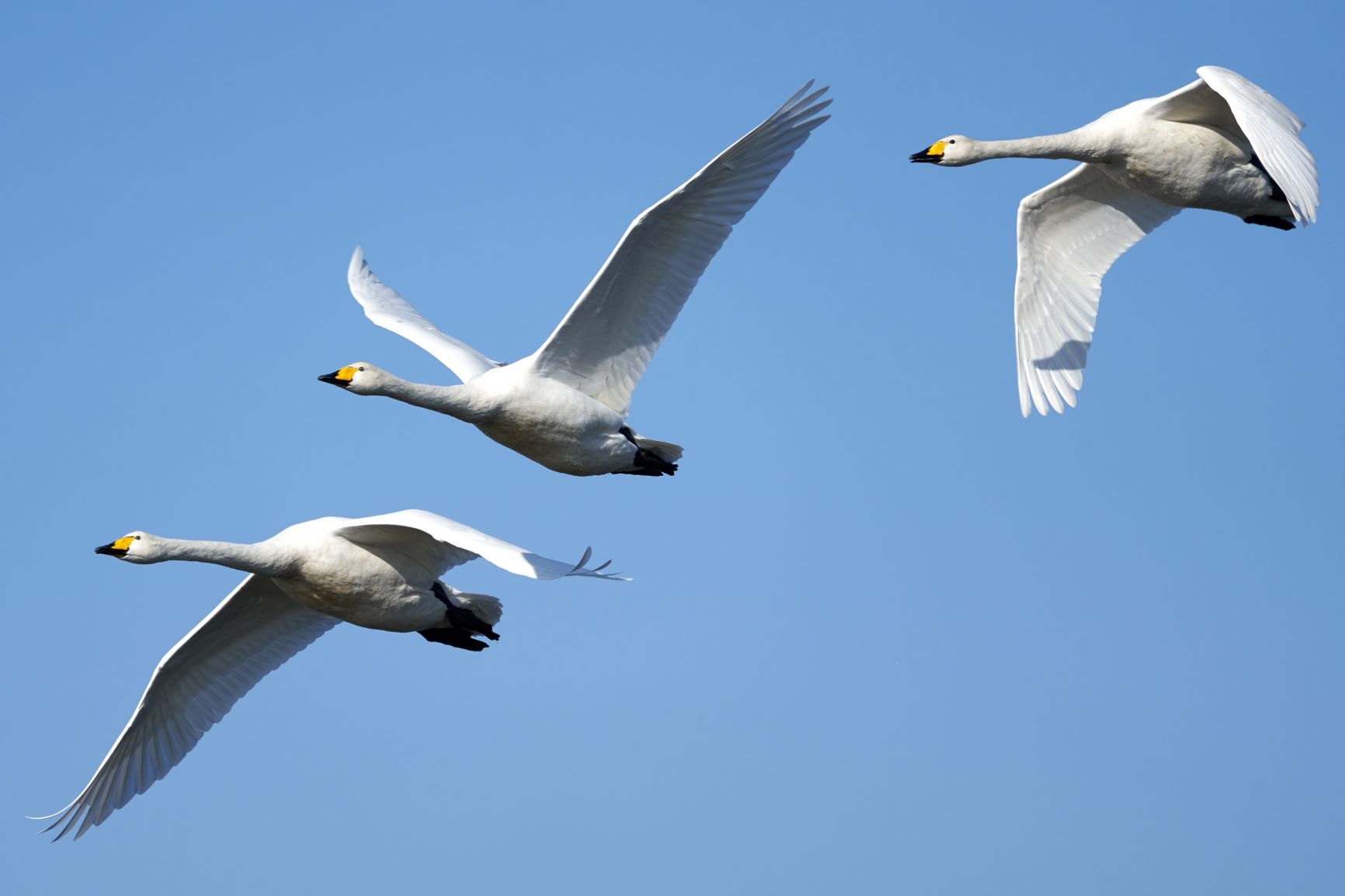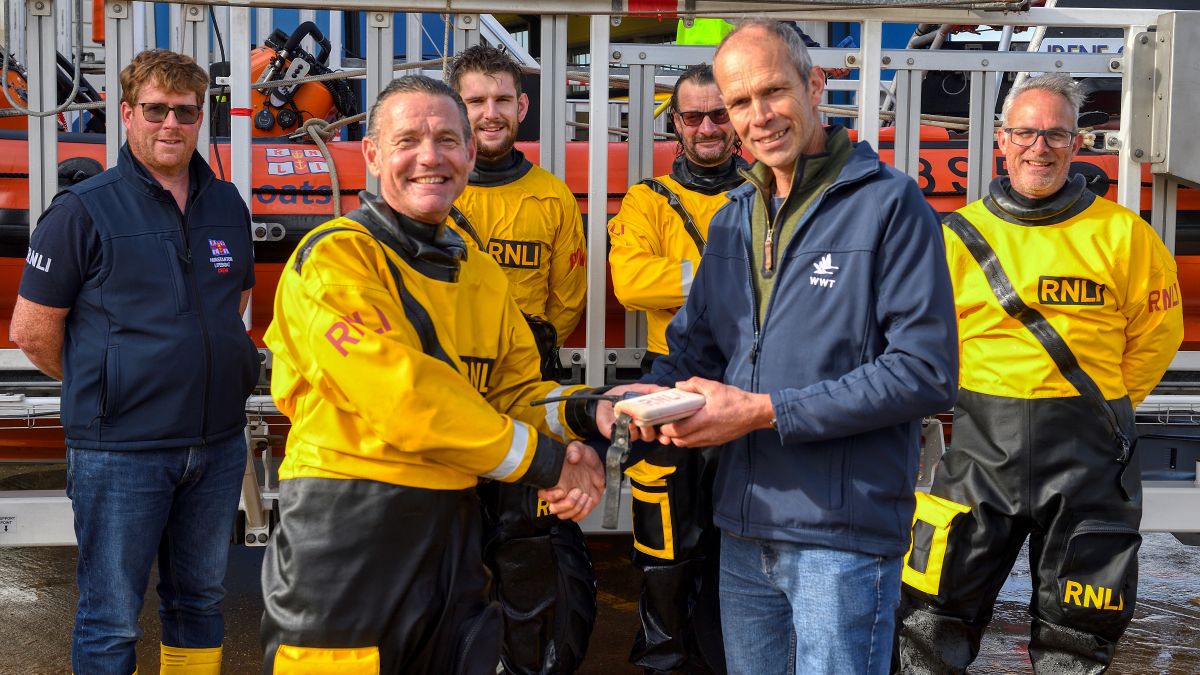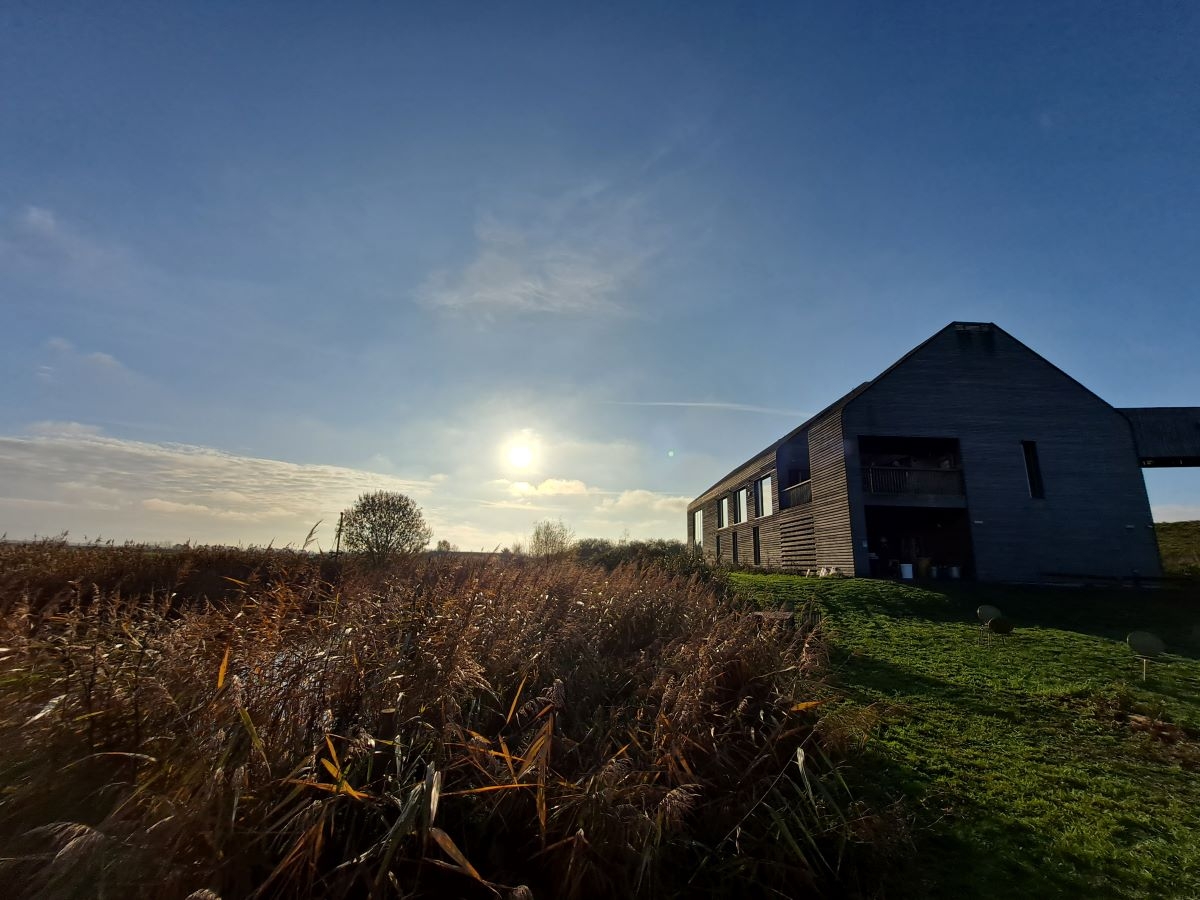Bewick's swans at Welney - Winter 2023
An update on the Bewick's swans this winter at WWT Welney.
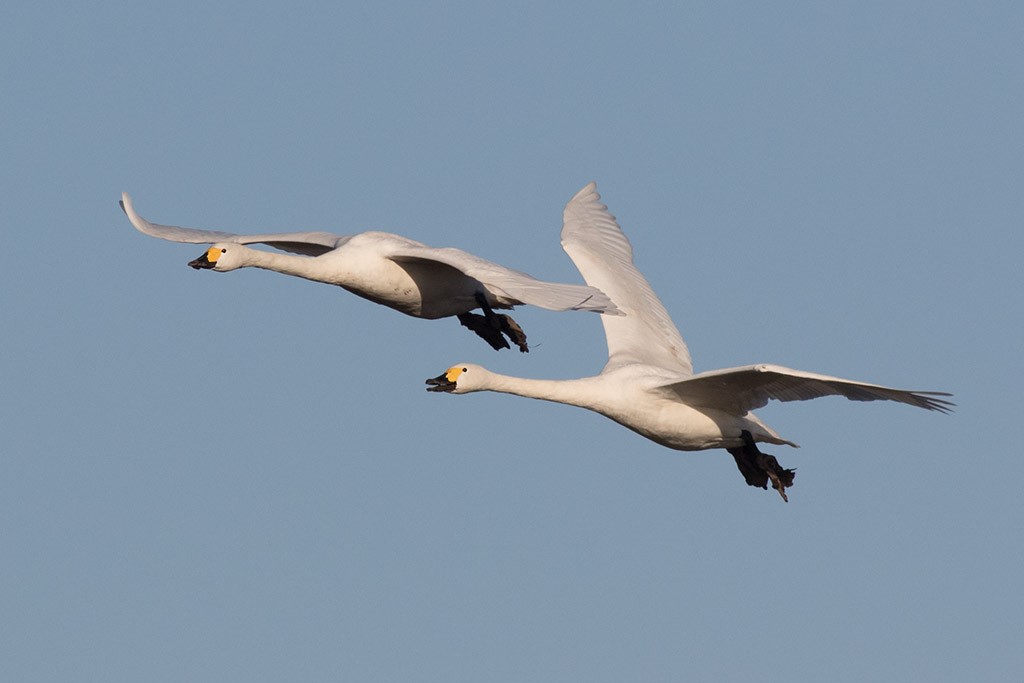
The Ouse washes is an internationally important site for wintering Bewick’s swans. Historically the washes have played host to thousands of Bewick’s, however, the steep decline in the population over the last 30 years, as well as mild conditions across the flyway has meant that numbers have struggled to reach 1000 in more recent times.
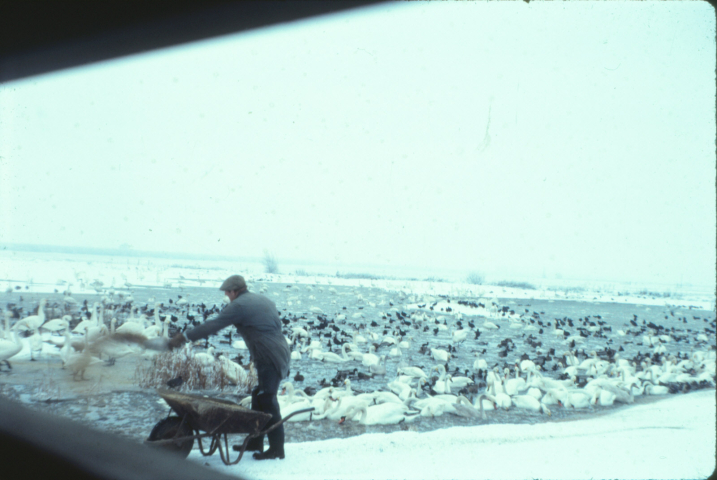
Bewick’s are very similar to their Icelandic cousins, the Whooper swans, but there are a few key ways to tell them apart. Bewick’s swans have a small “blob” shape of yellow on the bill that never extends past the nostrils. Whoopers on the other hand, have more of a yellow “wedge” shape on the bill. Bewick’s swans are also about two thirds of the size of a Whooper swan and have a shorter neck, so if seen next to each other, there is an obvious difference.
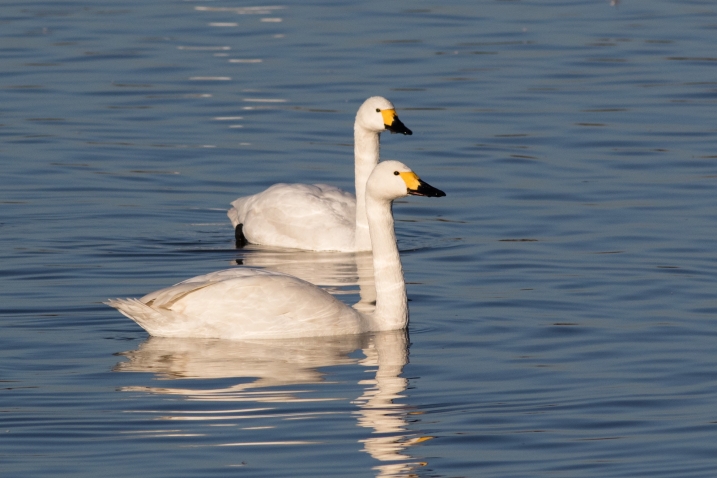
The cold northerly wind of mid-December brought snow, hard frosts and freezing temperatures to Welney. But despite this, the skies remained mostly clear along the migration path and allowed Bewick’s swans to push Westwards on their way to the UK.
On 19th December 2022, our first dawn and arable swan count revealed that 88 Bewick’s had made the journey and were roosting on the Ouse washes. 2 of those swans are currently fitted with GPS- tracking collars from a project running in Germany. Project Zwergschwan has been tracking Bewick’s swans since 2020 and has tagged a total of 67 swans. Thanks to the projects website and tracking map, we have been able to identify the 2 Bewick's as “Thelma” and “Gargarin”. You can find out more about the project and their tagged swans by clicking here.
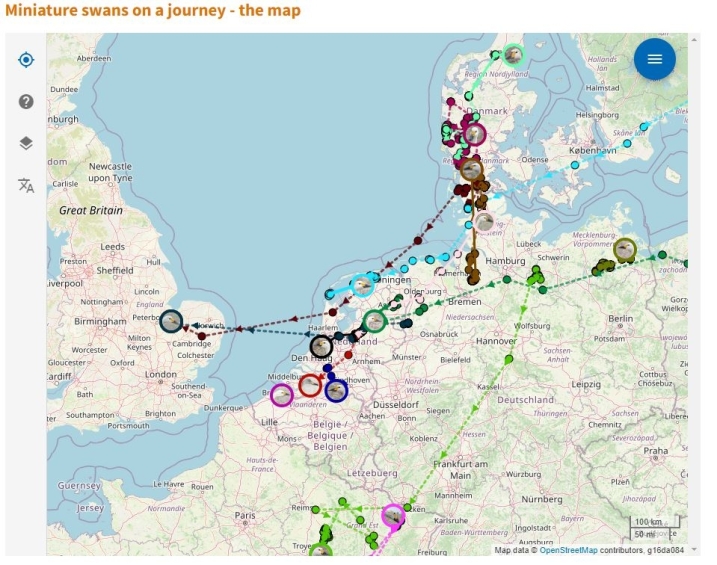
One of Gargarin’s first movements this winter with the collar attached, came from a small lake near Bondelum, Germany, on 24th November 2022. It stayed in Germany, moving back and forth from the coast before eventually moving North, just over the border into Denmark. In the early hours, on 15th December, it began its journey across the North Sea and arrived in Winkel in the Netherlands by 16:00pm. By midnight, it had flown to Mellis in Suffolk, before making its way to the Ouse washes the following day.
Thelma’s tracker sent one of its first co-ordinates from Laar, Germany also on 24th November 2022. She then stayed on a nature reserve to the East, before gradually making her way across the border from Germany into the Netherlands. On 11th December she landed on a freshwater lake near Amsterdam, where she roosted overnight. The next morning, she took off after 8:00am and by 16:00pm, had arrived at Ten Mile Bank, Norfolk.
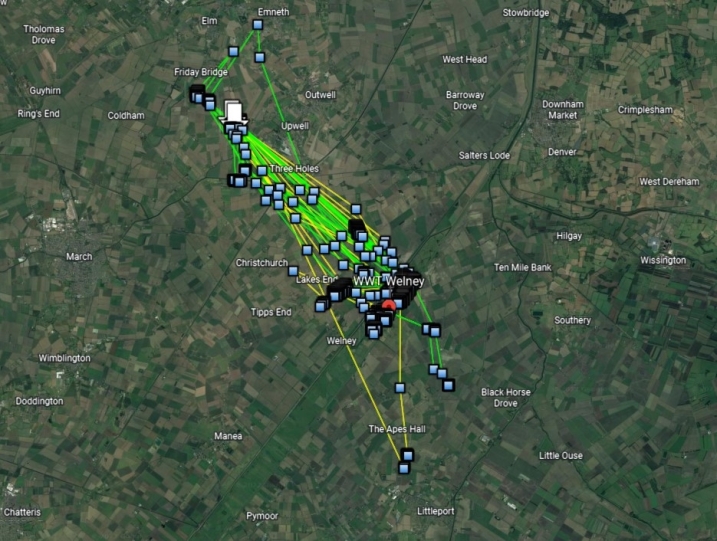
During the day, the swans head out to the arable land around the washes to feed on potatoes and sugar beet tops that have been left in the fields after the harvest. The GPS collars have allowed us determine Thelma and Gagarin’s favourite feeding grounds, which are an area of fields just to the West of Upwell.
Mid-January brought yet more Arctic winds and another cold spell to Welney. This pushed even more Bewick’s to the UK and the Ouse washes and by 21st January, a peak count of 824 Bewick’s were recorded roosting on the reserve. Add to this 122 from RSPB Ouse Washes and 167 from RSPB Nene Washes resulting in 1,113 Bewick's wintering in the Fens this year, an increase from only a month before, but still far short of numbers seen just a decade ago. The total number of Bewick’s on The Washes now makes up 7.3% of the total North-west European Population.
Blog written by Emilie Fox-Teece
Experience a magical morning swan spotting with a guide
Inspired to join the team for a morning watching swans waking and heading out from their roost. Chance to enjoy watching Bewick's and whooper swans. Spaces available on Tues 14 & Sat 18 February.
Find out more and book tickets for our swans awake mornings.
